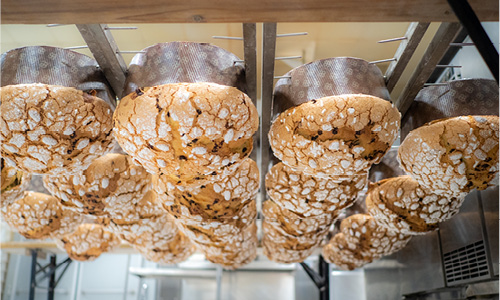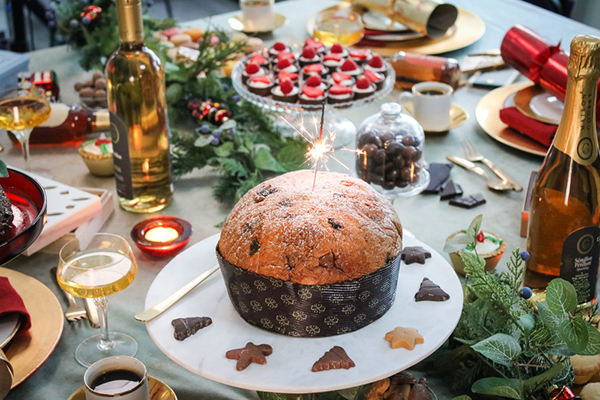In the heart of Italy, where culinary heritage thrives, one delicacy reigns supreme with its enduring legacy and captivating flavours – Panettone. This heavenly creation is steeped in centuries of tradition, celebrated during the holiday season, and has graced tables far beyond its Italian origins.
Panettone is the crown jewel of Italian patisserie, bearing a history as rich and flavourful as its dough. This sweet bread, characterised by its soft, airy texture and generous inclusions of candied fruits and nuts, has a history dating back to the Roman Empire, when ancient Romans enjoyed a leavened cake sweetened with honey.
How is it made?

Creating the perfect Panettone is no less than an art form, one that requires skill, patience, and an unwavering commitment to quality. The Pasticceri Committee of the Milanese Traditionare try to ensure artisans respect of tradition, stating that fresh ingredients and a specific formula should be used. Panettone must be made with natural sourdough yeast and be composed of 20% candied fruit, 16% butter, and 4% egg yolk. The dough then undergoes a meticulous process of fermentation, rising and falling three times across 36 hours before being baked in a precise temperature-controlled oven. To achieve the characteristic dome shape, the cake should be hung upside-down after baking to cool.
Where did Panettone come from?
The magic of Panettone extends beyond its preparation; it’s an embodiment of Italian holiday traditions. The true history of panettone is unknown, and which myth you hear depends on whose Italian grandmother you ask. Was it the result of a faulty dessert during a Christmas banquet held by the Duke of Milan? Where a young cook name Toni served a brioche filled with leftover ingredients like raisins and candied fruit, creating “il pan di Toni”. Or was the inventor a nobleman Ughetto degli Atellani who developed a rich, candied bread to win over the daughter of a baker named Toni? Whatever the original story, families still gather around tables, eagerly anticipating the moment when they slice into this iconic treat.
Panettone at Classic Fine Foods

Panettone stands as a testament to the enduring allure of Italian culinary traditions. It is a symbol of craftmanship, a melody of flavours, and a cherished part of holiday festivities. Classic Fine Foods is honoured to share this exquisite tradition with you, delivering a taste of Italy’s finest to your table.
This Christmas we are bringing you two variations of Panettone, from the Sicilian artisans: Pisti. Choose from a traditional Panettone filled with raisins and candied orange peels, or Pisti’s Sicilian Panettone; a wonderful experience made of pistachio green grains on an extra 70% dark chocolate glaze, filled with layers of delicate Sicilian pistachio cream.
Recipe ideas for leftover Panettone
A cherished holiday classic, best accompanied by a fine glass of Moscato or a delightful dip in Zabaione, Panettone is delicious even when eaten by itself. However, should you find yourself with an abundance of this beloved treat (as it is the gift of choice!), here is a selection of innovative ways to transform any leftover Panettone.
- Biscotti – bake leftover panettone slices for 15 minutes at 100°C to get a crunchy panettone-inspired biscotti.
- Gelato – combine pieces of torn panettone into a simple vanilla ice cream batter then chill in the freezer.
- French Toast – dip slices of panettone in a classic French Toast egg mix and fry in a pan until golden brown.
- Bread Pudding – soak pieces of torn panettone in custard and layer in a dish with dark chocolate or any other fillings such as jam, bake at 180°C for 25 minutes.
- Tiramisù – replace ladyfingers with wedges of panettone for a Christmas-inspired take on another Italian classic.
Panettone is much more than just a holiday treat; it's a symbol of tradition, craftsmanship, and the warmth of shared moments with loved ones. As we wrap up our journey through the world of Panettone, we hope you've gained a deeper appreciation for this Italian delicacy.
Browse our Christmas selection here.





